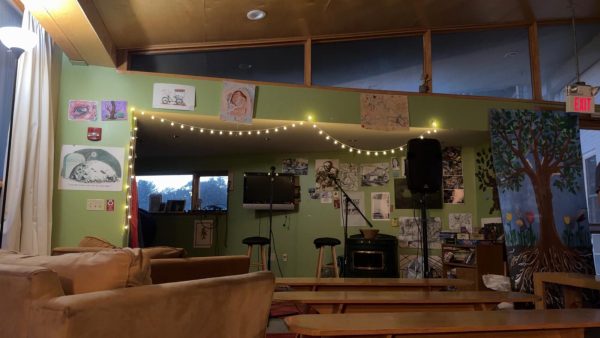Students to Gain Expanded Dorm Access
Following a final meeting with Department of Public Safety (DPS) on Thursday, Feb. 23, the Student Senate initiative to expand key card dorm access will be set into motion, paired with an initiative to bring more kitchen cooking supplies to the student body.
The current idea behind the increased access is that students will be able to swipe into dorm buildings that are in close proximity to their own buildings.
“It’s going to be grouped off into smaller roughly three dorm pairings based on location around campus,” states Vinny Palladino ’17, director of financial strategy of Student Senate. “So, freshman lower quads, upperclassmen upper quads, something like that all-over campus… we’re meeting with [DPS] on Thursday to finalize that more and hopefully we can create a long-term plan to open up access more on campus over the course of the next couple years.”
Student Senate is unsure of how this new system would look for special interest housing in dorms, and this will be discussed at the Thursday meeting.
“Senate hopes to encourage more interaction, especially between students in smaller residence halls,” comments Associate Dean of Students for Residence Life and Housing Angie Harris. According to Harris, Residence Life and Housing, Department of Public Safety, Vice President and Dean of Student Life and Student Senate were involved in the process.
The initiative to supply students with kitchen supplies is paired with increased dorm access. Student Senate’s intention is to place kitchen supplies such as pots, pans, utensils and cleaning supplies in five dorm locations around campus, pending increased dorm access approval this Thursday.“We want students to use this and have it be accessible,” states Sara Nash ’19, director of campus life and initiatives of Student Senate, who presented the initiative at the Tuesday, Feb. 21 Student Senate meeting. “We want it to be a used program.”
The cost of buying these supplies is $1,096.
Chris Jones ’19, director of Academics, raised a question at the meeting about how to prevent students from stealing the supplies.
“We are piloting [the program],” responded Nash. She suggested having someone from the Campus Life and Initiatives committee check in on the supplies and the program every three weeks. She also stressed “open communication with RAs and housekeepers to see what’s working and what’s not.”
Senate has received limited feedback from the student body on the expansion of dorm access so far.
“We had one student who came to us concerned about how this might increase sexual assault or violence on campus,” commented Palladino. “However, she was under the impression that it would just immediately be students [able to] scan into any dorm they wanted. We talked with the student and told her that it was smaller group pairings, and she was open to that idea to start especially because we have talked to DPS about our worry with that [issue].”
Senate hopes that “because people are going to scan in, that they’ll be able to track where people are going in and out of more frequently,” according to Palladino. DPS will be able to know who is entering and leaving buildings, which Senate hopes will increase security.
Students appear to have mixed reactions on increased dorm access.
Pierce van Mulbregt ’19 commented, “It would have to be during the day only though, so people aren’t walking around other peoples’ dorms at night, that’s kind of weird. I think it would be useful for the most part, but usually you aren’t going into a dorm unless you know someone there and that person can usually just let you in. I feel like dorms would feel a little less private and secure if anyone could just walk into them, which probably isn’t the best atmosphere for living space.”
Michael Murphy ’20 states, “I don’t think there is a need to change the current system, but I do think there are benefits to giving students access to all dorms. There are some security risks, but I think dorm access could be convenient for meeting up with friends and study groups… Dorm access might also be beneficial if students need to find shelter quickly during an emergency.”
“While it’s super annoying and inconvenient at times to call and wait for your friends, I personally think it’s a huge safety risk if every student could walk into every dorm,” shares Jen Ailey ’19.
Karuna Sah ’19, a Resident Advisor, says, “it would definitely be ‘convenient’ as people see it. But I think it would be a terrible idea. It would be extremely hard to control and you wouldn’t want anyone just walking into dorms especially during the weekends. Security wise – definitely no!” she maintained.
“I would say I’m conflicted,” states Janelle Winchester ’20. “I think it would be super convenient when it comes to seeing friends, but it could also be a safety hazard if there is an instance where someone is being stalked or harassed.”
Some Dickinson community members see the initiative as a positive way to enhance student life.
“This expansion was a result of conversations around kitchen facilities and study groups,” stated Joyce Bylander, vice president and dean of student life, in an email. “I was particularly persuaded by students being interested in gaining access to places with kitchens for community building activities.”
Sarah Dembling ’19 added, “[Increased dorm access] promotes connections between people living in different dorms that you may not get to know otherwise.”




